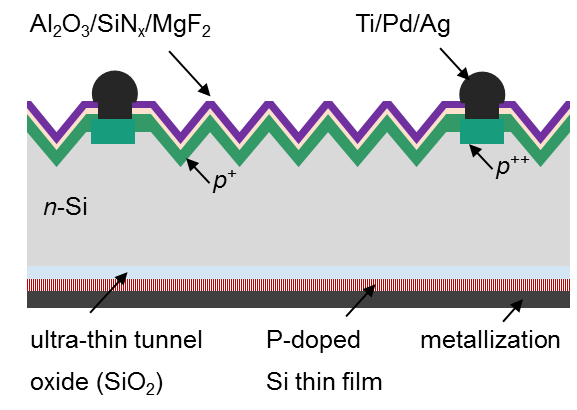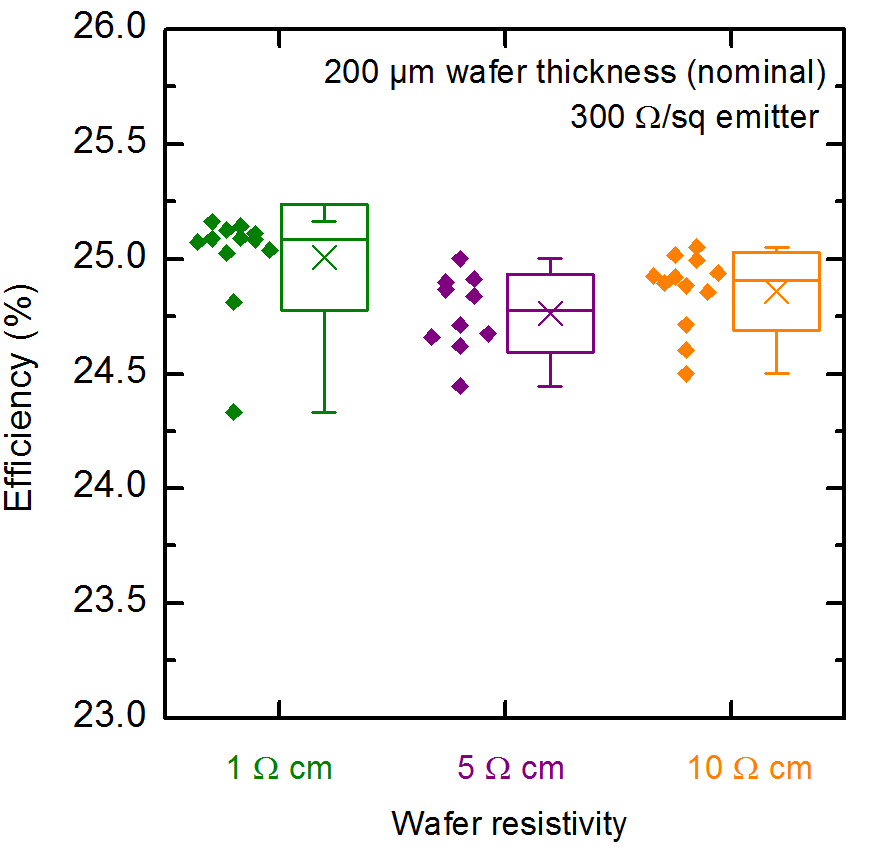| Duration: | October 2013 - September 2016 |
| Contracting Authority/ Sponsors: | Department of Energy (USA) |
| Project Focus: |
TOPCon – Overcoming Fundamental Bottlenecks to a New World-Record Silicon Solar Cell


The use of charge carrier-selective contacts enables the realization of highest solar cell efficiencies while preserving a potentially lean process sequence. With 25.3 % for a n-type solar cell with full-area charge carrier-selective backside contact, Fraunhofer ISE is holding the world record for silicon solar cells contacted on both sides. n-type silicon offers the advantage of higher tolerance to impurities. However, due to the lower segregation coefficient compared to p-type silicon, the variation in the base resistance increases. Thanks to the one-dimensional current flow of solar cells with charge carrier-selective contacts, the base resistance does not significantly influence cell performance. It was demonstrated for the first time that efficiencies greater than 25 % can be achieved for base resistances between 1 and 10 Ωcm.
The charge carrier-selective contact TOPCon (tunnel oxide passivated contact) developed at Fraunhofer ISE is based on an ultra-thin tunnel oxide in combination with a thin silicon layer and enables excellent charge carrier selectivity. Using this TOPCon back side (cell structure, Fig. 1, 20´20 mm2), a record degree of efficiency of 25.3 % (Voc = 718 mV, Js = 42.5 mA/cm2, FF = 82.8%) could be achieved on n-type silicon for a solar cell contacted on both sides.
The quality of the silicon wafer is essential for the production of highly efficient solar cells. Due to the higher tolerance to impurities as well as the lack of light-induced degradation (LID), the currently highest degrees of efficiency are achieved on n-type silicon (in the lab as well as in production). However, the lower segregation coefficient of n-type silicon compared to p-type silicon causes a higher variation in base resistance during crystal growth. For solar cells with pronounced lateral structures (PERC, IBC), only silicon wafers with certain base resistances and thus, only a part of the entire crystal rod can be used. However, due to the one-dimensional current flow in the basis of the TOPCon solar cell, the base resistance has no significant influence on solar cell performance. We were able to demonstrate that this can also be implemented in practical applications for highest degrees of efficiency. We achieved efficiencies ≥25 % for base resistance between 1 and 10 Ωcm. Open-circuit voltages (Voc) >715 mV and filling factors (FF) >81.5 % were achieved for all base resistances.